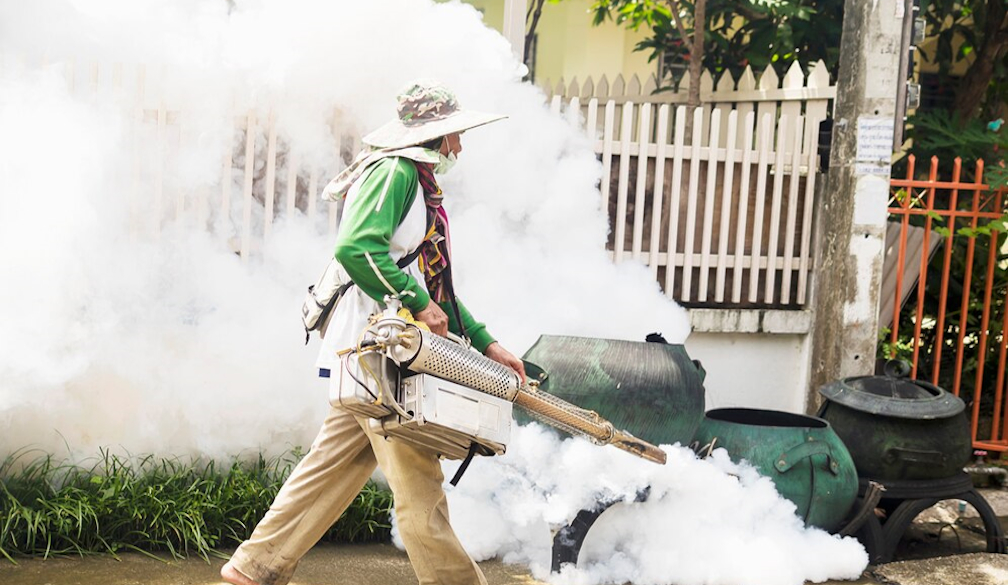The Essential Guide to Pest Control: Ensuring Health, Safety, and Comfort

Pest control is crucial to maintaining a healthy and comfortable living environment. Whether in residential homes, commercial spaces, or agricultural settings, pests can pose significant challenges and risks to human health, property integrity, and overall well-being. This comprehensive blog explores the importance of pest control, common pests encountered, practical control methods, and the role of professional pest management services.
Importance of Pest Control
Pests, ranging from insects to rodents and beyond, can have detrimental effects on various aspects of life:
Health Risks: Many pests can transmit diseases and pathogens, posing severe health risks to humans and pets. For example, mosquitoes can spread malaria and dengue fever, while rodents can carry hantavirus and leptospirosis.
Property Damage: Pests can cause significant damage to structures, furniture, clothing, and stored goods. Termites, for instance, are notorious for destroying wooden structures, leading to costly repairs.
Food Contamination: Pests such as cockroaches and rodents can contaminate food supplies, leading to foodborne illnesses and hygiene issues.
Allergies and Asthma: Some pests, like dust mites and cockroaches, can trigger allergic reactions and worsen asthma symptoms in individuals sensitive to these allergens.
Loss of Reputation: In commercial settings, pest infestations can tarnish a business's reputation and lead to customer dissatisfaction.
Common Types of Pests
Understanding the common pests encountered in different environments helps in implementing targeted control measures:
Insects:
Ants: Often found indoors and outdoors, ants can quickly become a nuisance, especially in kitchens and food storage areas.
Cockroaches: Cockroaches are a significant health concern because of their resilience and ability to thrive in diverse environments, facilitating the spread of diseases.
Bed Bugs: These nocturnal pests feed on human blood and can infest bedding, causing discomfort and skin reactions.
Rodents:
Mice and Rats: In addition to causing structural damage by gnawing, rodents contaminate food and spread diseases through their droppings and urine.
Termites:
These silent destroyers feed on wood, causing extensive damage to buildings and furniture. Termite infestations frequently remain unnoticed until substantial damage has already occurred.
Mosquitoes:
Mosquitoes are vectors for diseases such as malaria, dengue fever, Zika virus, and West Nile virus, making them a serious health concern worldwide.
Wildlife:
Squirrels, raccoons, and birds: While often considered pests due to their nesting habits and property damage, squirrels, raccoons, and birds pose health risks and can be challenging to manage without professional help.
Effective Pest Control Methods
Implementing effective pest control measures requires a combination of prevention, sanitation, and, in some cases, professional intervention:
Preventive Measures:
Seal Entry Points: Regularly inspect and seal cracks, gaps, and openings in walls, floors, and foundations to prevent pests from entering buildings.
Proper Waste Management: Dispose garbage promptly in sealed containers and maintain clean surroundings to minimize pest attractants.
Screening and Ventilation: Install screens on windows and doors and ensure proper ventilation to reduce indoor humidity levels that attract pests.
Chemical Control:
Insecticides and Rodenticides: Use pesticides judiciously and according to label instructions to target specific pests like for example, to eliminate bed bugs. Consider non-chemical alternatives in sensitive environments.
Biological Control:
Natural Predators: Introduce or encourage natural predators and parasites that feed on pest species, such as ladybugs for aphids or nematodes for soil-borne pests.
Mechanical Control:
Traps and Barriers: Use traps, baits, and physical barriers to capture or deter pests effectively. Examples include rodent traps, fly traps, and fencing to exclude wildlife.
Integrated Pest Management (IPM):
IPM combines multiple strategies, including monitoring, sanitation, and targeted pesticide use, to manage pests effectively while minimizing environmental impact and human health risks.
The Role of Professional Pest Control Services
Professional pest management services play a vital role in addressing complex pest infestations and ensuring long-term pest prevention:
Expertise and Training: Pest control professionals are trained to identify pest species, assess infestation severity, and implement appropriate control measures safely and effectively.
Tailored Solutions: They provide customized pest management plans based on the specific needs of residential, commercial, or agricultural settings.
Advanced Technologies: Professionals can access advanced tools and technologies, including pest monitoring devices, thermal imaging, and eco-friendly pest control products.
Compliance and Safety: They adhere to regulatory standards and guidelines for pesticide use, ensuring safe application and minimizing risks to human health and the environment.
Long-Term Prevention: Professional services often include ongoing monitoring and preventive treatments to maintain pest-free environments and prevent future infestations.
Eco-Friendly and Sustainable Practices
In response to growing environmental concerns, there is a trend towards adopting eco-friendly and sustainable pest control practices:
Biological Pest Control: Encouraging natural predators and using biological agents like nematodes or bacteria to control pests.
Organic Products: Utilizing organic pesticides derived from natural substances, such as botanical oils or microbial insecticides, that have minimal impact on non-target organisms.
IPM Strategies: Emphasizing integrated pest management approaches that prioritize prevention, monitoring, and the least-toxic control methods as part of a holistic pest control strategy.
Conclusion
Pest control is not merely about eradicating nuisances; it is about safeguarding health, protecting property, and ensuring peace of mind. By understanding the importance of effective pest management, recognizing common pests, implementing suitable control methods, and leveraging professional expertise, individuals and businesses can create safer and healthier environments for all. Whether through preventive measures, chemical controls, or sustainable practices, proactive pest control efforts contribute significantly to maintaining a harmonious balance between human habitats and the natural world.














